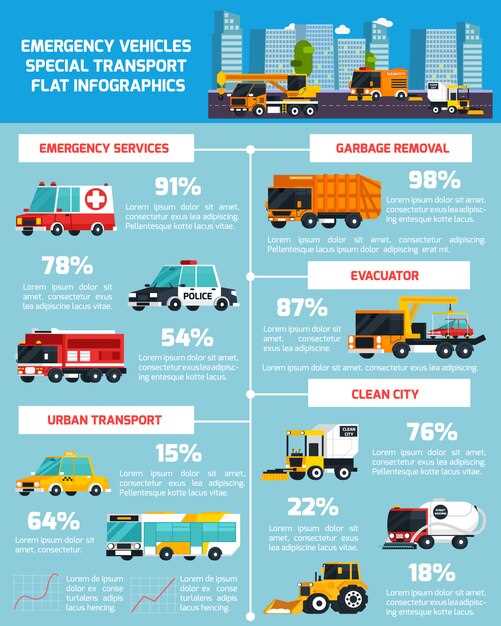

In the realm of transportation, the size of a truck plays a pivotal role in determining its overall fuel efficiency. As industries continue to evolve, understanding the intricate relationship between truck dimensions and fuel consumption becomes essential for optimizing operations. With increasing fuel prices and growing environmental concerns, exploring how truck size impacts fuel efficiency is not merely an academic exercise; it is a critical factor for businesses aiming to reduce costs and enhance sustainability.
The size of a truck directly influences various factors such as weight, aerodynamics, and engine performance. Larger trucks generally possess greater carrying capacity, but this comes at a cost. Their increased weight can lead to higher fuel consumption, challenging the balance between payload and efficiency. Conversely, smaller trucks, while more economical in terms of fuel use, may not meet the demands of certain business operations. Hence, businesses must closely evaluate the trade-offs involved in selecting the appropriate truck size to maximize their fuel efficiency while ensuring operational effectiveness.
Moreover, advancements in technology and engineering continue to shape the landscape of truck design. Innovations such as improved aerodynamics, lightweight materials, and fuel-efficient engines may mitigate some of the disadvantages associated with larger trucks. Therefore, understanding the impact of size on fuel efficiency not only aids businesses in making informed decisions but also drives the industry towards a more sustainable future.
Understanding How Truck Dimensions Affect Fuel Consumption

The size of a truck plays a critical role in determining its fuel efficiency, impacting both operational costs and environmental considerations. Truck dimensions encompass factors such as length, width, height, and weight, all of which directly influence the vehicle’s fuel economy.
Firstly, larger trucks typically have greater frontal areas, which increases aerodynamic drag when driving at higher speeds. This drag forces the engine to work harder, resulting in higher fuel consumption. In contrast, smaller trucks generally possess a more streamlined shape, allowing them to cut through air more effectively, thus enhancing fuel efficiency.
Secondly, the weight of the truck is a pivotal aspect. Heavier trucks require more energy to accelerate and maintain speed, leading to increased fuel usage. Moreover, heavier loads necessitate more robust engines, which can lead to further reductions in efficiency, especially if the truck is not optimally loaded.
Another dimension to consider is the height of the truck. Taller vehicles can experience significant wind resistance, particularly in adverse weather conditions. This added resistance contributes to a drop in fuel economy, emphasizing the need for careful design considerations when optimizing truck dimensions for efficiency.
Furthermore, the overall length of the truck can impact turning radius and maneuverability, especially in urban settings. While longer trucks might be more efficient in transporting larger loads over long distances, they can be less efficient in stop-and-go situations, where quick acceleration and deceleration are frequent.
Ultimately, understanding the complex relationship between truck dimensions and fuel consumption is vital for manufacturers and fleet operators. Optimizing truck size not only aids in achieving better fuel economy but also contributes to reducing overall emissions and operational costs, aligning with wider goals for sustainability and efficiency in the transportation sector.
Comparative Analysis of Fuel Economy in Different Truck Classes

The fuel economy of trucks is significantly influenced by their size and class. Smaller trucks, such as light-duty pickups, generally demonstrate better fuel efficiency due to their reduced weight and engine power requirements. These vehicles are typically designed for daily commuting and light hauling, making them an ideal choice for urban environments where fuel economy is critical.
In contrast, medium-duty trucks offer a balance between payload capacity and fuel efficiency. While they consume more fuel than light-duty trucks, advancements in engine technology and aerodynamics have improved their economy. These trucks are often used for delivery services and can efficiently manage heavier loads while maintaining reasonable fuel consumption rates.
Heavy-duty trucks, designed for significant transport tasks, present a different scenario. Although they offer substantial cargo capacity, their size and power lead to lower fuel economy figures. The larger engines and structural requirements contribute to increased fuel consumption, making these trucks less efficient in terms of miles per gallon compared to their lighter counterparts.
Moreover, the evolution of technology in the trucking industry, such as hybrid and electric options, is beginning to influence fuel economy across all classes. As regulations tighten and manufacturers innovate, the disparity in fuel efficiency among truck sizes may narrow. Understanding these differences is essential for operators to choose the right truck class for their specific needs while considering the impact on fuel economy.
Practical Tips for Optimizing Fuel Economy Based on Truck Size
When it comes to enhancing fuel economy, understanding the impact of truck size is essential. Larger trucks typically consume more fuel due to their weight and aerodynamics, but there are strategies that can help mitigate this challenge.
First, choose the right truck size for your needs. If your tasks do not require a heavy-duty vehicle, consider opting for a lighter truck, as smaller trucks generally offer better fuel economy. Analyze your typical load requirements to select the most suitable option.
Next, regular maintenance plays a crucial role in optimizing fuel efficiency. Ensure your truck’s engine is well-tuned, and replace air filters and spark plugs as recommended. Properly inflated tires also significantly affect fuel economy; under-inflated tires can decrease efficiency by increasing rolling resistance.
Aerodynamics is another critical factor. For larger trucks, consider adding aerodynamic features like side skirts or truck bed covers, which can reduce drag and enhance fuel economy. Keeping payloads secured and organized can also minimize wind resistance while driving.
Driving habits greatly influence fuel efficiency. Encourage smooth acceleration and braking, as aggressive driving consumes more fuel. Use cruise control on highways to maintain a steady speed and improve economy. Additionally, limit idling time to conserve fuel during stops.
Lastly, consider utilizing technology such as telematics. Advanced systems can monitor fuel usage and driving patterns, providing valuable insights into how to improve fuel economy based on specific truck size and load conditions.